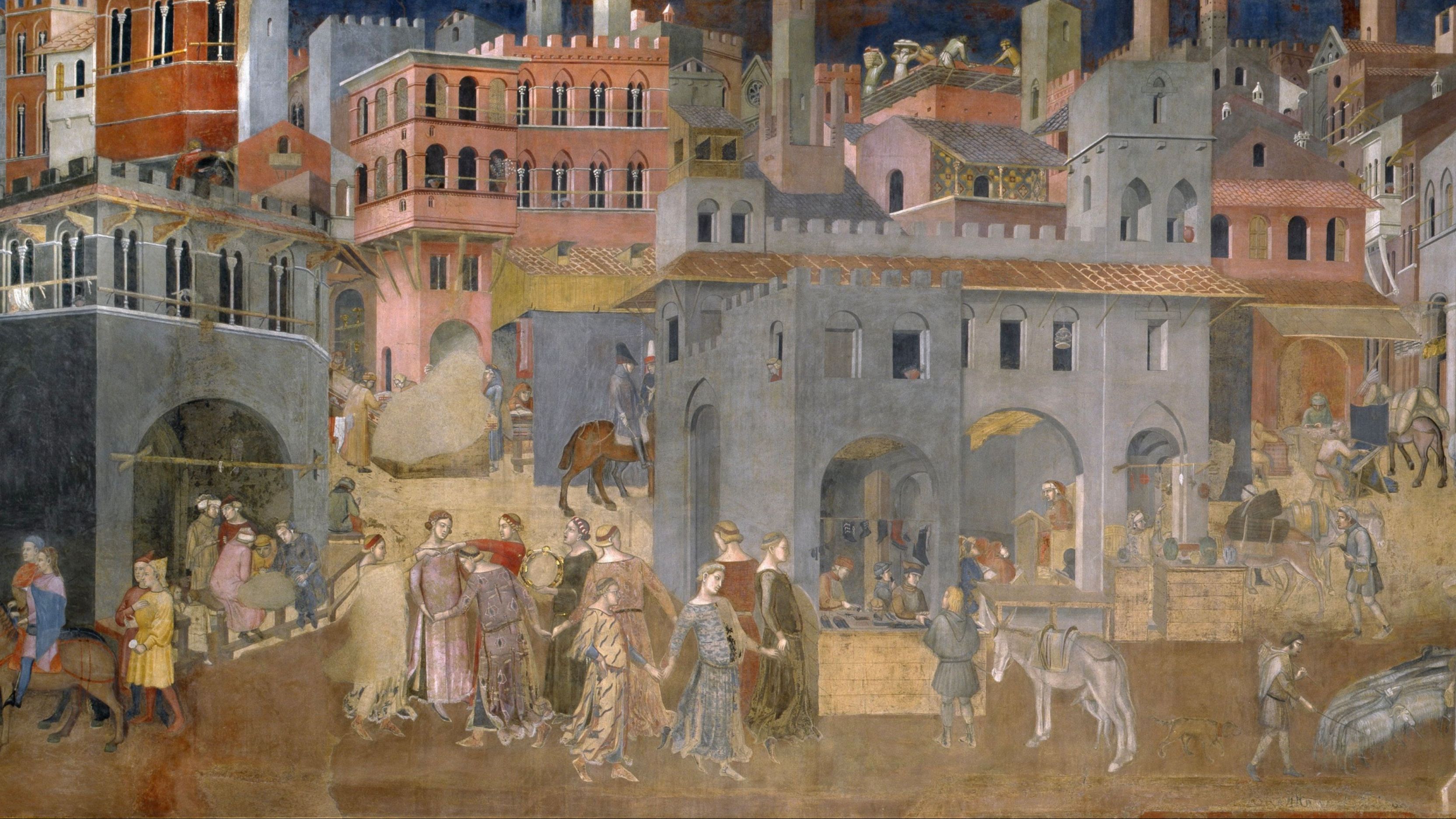What is beautiful?
Oct 12, 2023
An example of artwork from around St. Thomas's time was this fresco by Ambrogio Lorenzetti, "The Allegory of Good and Bad Government" in Siena. Much of the art from the Middle Ages was dark in nature. St Thomas Aquinas didn't even get to experience the beauty of the Renaissance Period yet.
Italian theologian, St. Thomas Aquinas (1225 – 1274) thought there were three elements that defined beauty: integritas, consonantia, and claritas. They struck a chord with me. What are they?
1. Integritas (integrity)
- Parts make up the whole
- The right parts are necessary for there to be integrity in the whole
2. Consonantia (proportion)
- Order
- Unity
- Well created
- Proportion
- Harmony
3. Claritas (clarity)
- Illumination
- No explanation necessary
- The idea is expressed
- Allows for self revelation
My take on how this relates this to art:
When the proper elements of art are arranged in a painting they create harmony that is felt by the viewer. The viewer experiences this clarity as it causes joyful consideration. They can connect to it.
On the other hand, if a piece does not have necessary elements it lacks unity. The consonantia (which literally means “all parts working together”) is broken. It doesn’t feel right. The viewer cannot process or understand the art (lacks clarity).
How can use this knowledge in our artwork:
Concentrate on the parts – the elements of art. Use one or more in effectively communicating your intention to create the necessary harmony that will radiate beauty, delight your viewer and create connection between you and those who view your art.
It’s a beautiful thing.
